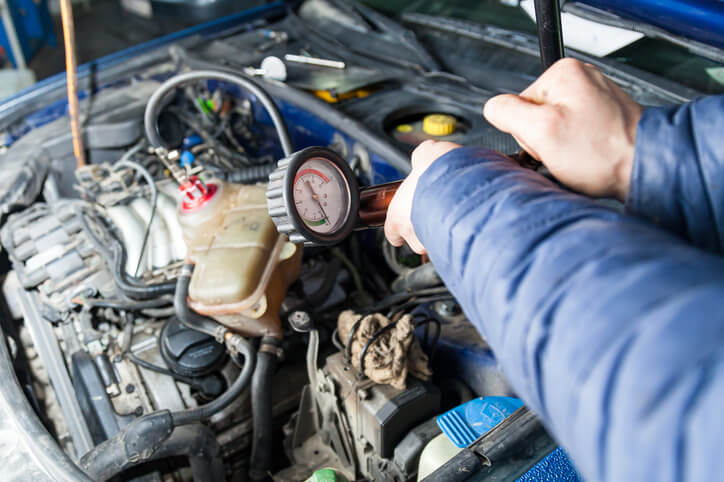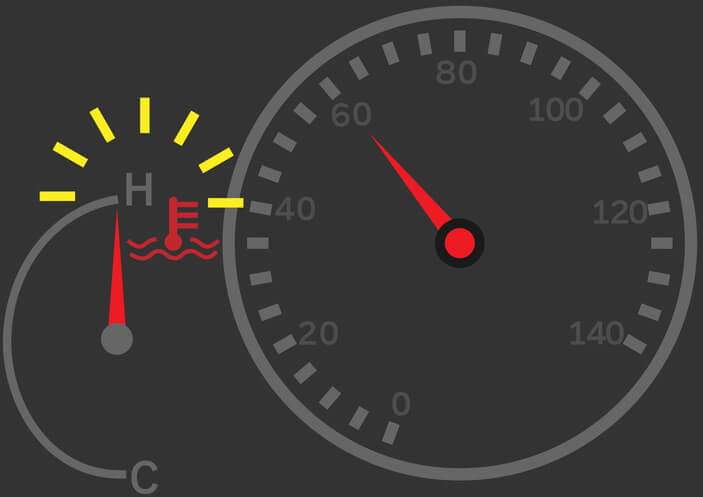Overheating 101: Diagnosing Engine Cooling Problems in Hot Weather
Summer may be great for road trips, but for your engine, it’s one of the harshest times of year. As the mercury rises, so does the risk of overheating, and cooling system problems are one of the most common issues drivers face in hot weather. That’s why understanding the causes of overheating is a key skill covered in auto mechanic training at ATC Cambridge.
If you’re planning to work in the automotive repair field, knowing how to quickly identify and fix a failing cooling system is essential.
Why Cars Overheat in Summer
Modern vehicles are equipped with complex cooling systems designed to regulate engine temperature under a variety of conditions. But high outdoor temperatures put added stress on radiators, coolant hoses, fans, and thermostats. When any part of the system falters, the engine temperature can quickly spike, and that can lead to serious damage.
Some common summer-specific contributors to overheating include:
- Low or old coolant
- Cracked or brittle hoses
- Broken radiator fans
- Thermostat failures
- Blocked radiators from debris or bugs
- Poor airflow due to faulty belts or damaged fan clutches
At ATC Cambridge, students in the Automotive Service Technician program are taught how each of these components functions, what can go wrong, and how to test and diagnose them in real-world scenarios.

Symptoms of a Failing Cooling System
When a customer brings in a car during a heatwave and says, “It feels hot” or “The temperature gauge spiked,” that’s your first clue. But part of automotive training is learning to look deeper and verify the root cause.
Here are the red flags you’ll learn to identify and investigate:
- Steam coming from the hood
- Temperature warning light on the dash
- Coolant leaks or low coolant levels
- Radiator fan not engaging
- Discoloured or contaminated coolant
- Unusual engine smells (like burnt coolant)
Students learn how to interpret these symptoms and use diagnostic tools like pressure testers, scan tools, and IR thermometers to confirm the issue and determine the best repair approach.
Real-World Diagnostic Auto Mechanic Training at ATC Cambridge
You won’t just be reading manuals. You’ll be in the shop running cooling system tests, inspecting thermostats, flushing radiators, and troubleshooting engine temperature sensors. The hands-on auto mechanic training at ATC Cambridge means students learn how to:
- Pressure-test radiators and hoses to check for leaks
- Confirm thermostat functionality through heat-up tests
- Use scan tools to monitor live engine temperature data
- Flush and refill coolant safely and correctly
- Replace damaged fans, belts, and pumps
We also emphasize customer communication, explaining the importance of regular coolant flushes, the dangers of ignoring overheating warnings, and preventive tips to reduce summer breakdowns.

Preparing for a Career in Modern Auto Repair
Today’s cooling systems are smarter, but they’re also more sensitive. Some use electric water pumps, dual thermostats, and onboard diagnostics that require technicians to be comfortable with both the mechanical and electronic side of the job.
At ATC Cambridge, our automotive training prepares students for this hybrid repair landscape. You’ll graduate knowing how to handle both traditional and advanced cooling systems and become the kind of technician modern shops are looking for.
Do you want to pursue an Automotive Service Technician career?
Contact ATC Cambridge for more information.


